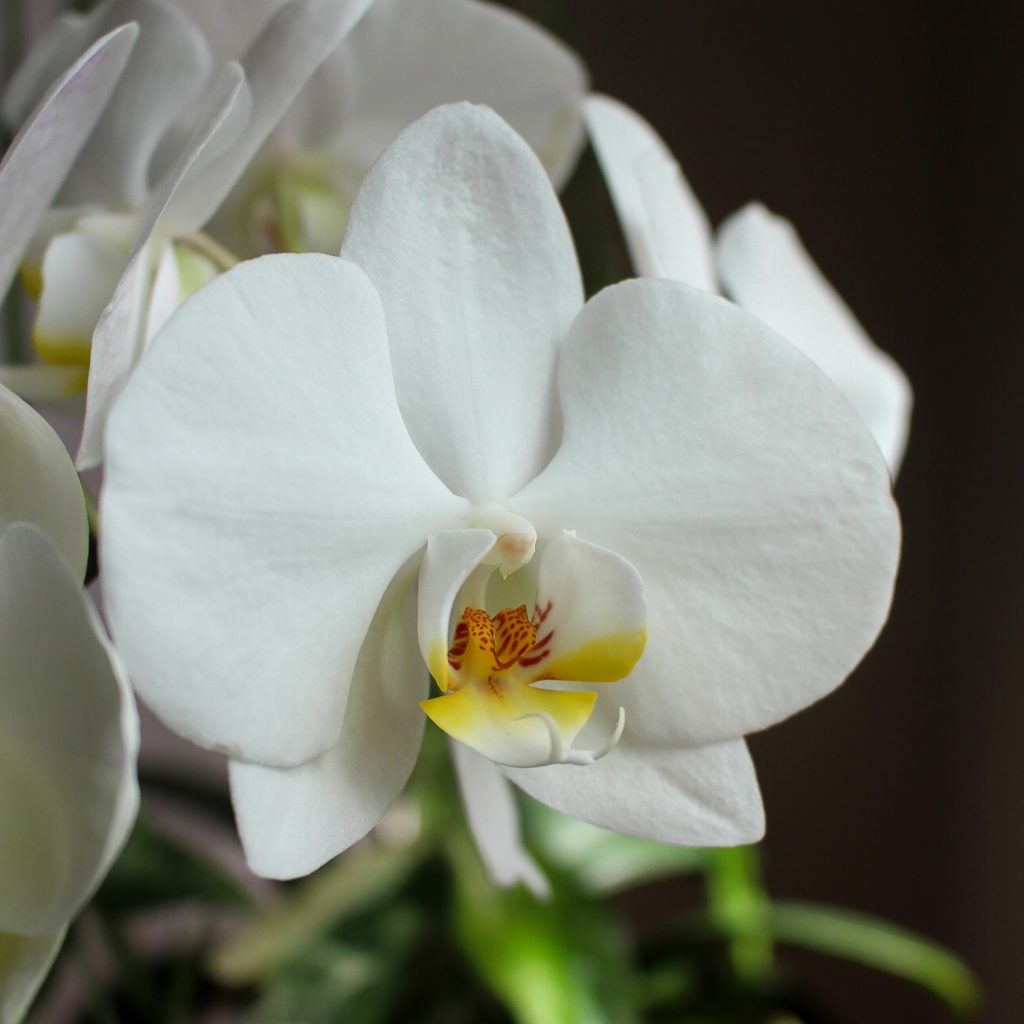PHALAENOPSIS
Phalaenopsis orchids, commonly known as moth orchids, originate from tropical regions such as Southeast Asia, Indonesia, the Philippines, and northern Australia. Renowned for their intricate, butterfly-like blooms, these adaptable orchids have become popular choices for indoor cultivation worldwide. With their stunning displays and resilience, Phalaenopsis orchids add a touch of exotic elegance to any space, making them a beloved choice among orchid enthusiasts.
Here are some tips for caring for your Phalaenopsis plant:
- Light: Place your Phalaenopsis in bright, indirect light. Avoid direct sunlight, as it can scorch the leaves. A north or east-facing windowsill is usually ideal.
- Temperature: Phalaenopsis orchids prefer temperatures between 20-25°C during the day and around 15-20°C at night. Protect them from drafts, sudden temperature changes, and cold windows.
- Watering: Your plant will let you when it needs water because the roots will look thin and pale in colour, plump green roots are a sign of a well-watered phalaenopsis! Let the substrate dry out before soaking the whole pot in room-temperature water for about 20 minutes. Ensure all the water drains away before placing your plant back in its pot cover – it doesn’t want to sit in water!
- Humidity: Maintain a humidity level of around 50-70%. If the air is too dry, consider placing a tray with water and pebbles near the orchid or using a humidifier.
- Fertilizer: Feed your orchid with a balanced orchid fertilizer at half strength every 2-4 weeks during the growing season (spring and summer). Reduce or stop fertilizing in the fall and winter when the plant is not actively growing.
- Pruning: Remove spent flower spikes by cutting them just above a node. Trim yellow or withered leaves at the base with sterile scissors.
- Repotting: Use a well-draining orchid mix composed of bark, sphagnum moss, and perlite. Repot your Phalaenopsis every 1-2 years or when the potting mix breaks down.
- Blooming:Phalaenopsis orchids can bloom for several months. After the flowers fade, they may rebloom from the same spike or produce new spikes.






